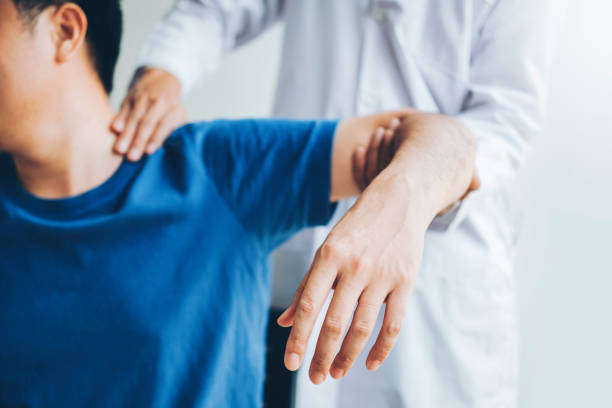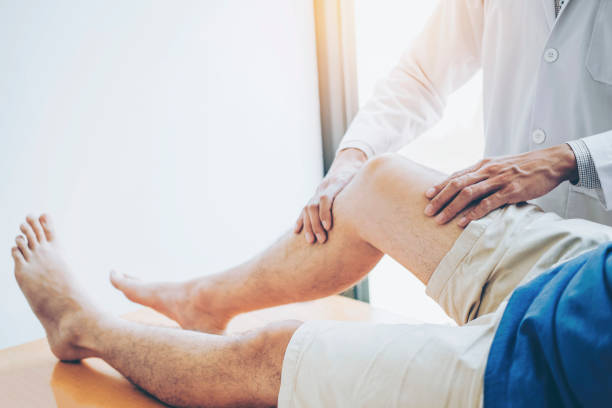The Path to Recovery – How Physiotherapists Help You Heal
Individuals will experience Recovery in different ways. Whether it be through professional treatment services, 12-step or non-12-step mutual aid groups, natural or medication assisted, the journey is personal and unique to the person.
One of the first decisions you will face will be where to seek treatment. The choice you make and the steps you take predetermine your outcome to Recovery.

Manual therapy
Manual therapy is a hands-on form of physical treatment using skilled movement by the physical therapist to treat soft tissue injuries and joints. The techniques used may improve tissue extensibility, increase joint range of motion, induce relaxation, mobilize or manipulate soft tissues and joints, change muscle function, alter kinaesthetic awareness and improve movement patterns and pain modulation.
Manually stretching tight muscles may include contract/relax, reciprocal inhibition and traction techniques. Changing the way in which muscles work by changing the pattern of activation and inhibiting specific muscle groups can lead to increased strength and a decrease in the pain generated by those muscles.
Techniques may also be utilized to reduce soft tissue swelling. For example, lymphatic drainage techniques utilize gentle skin stretching massage to promote the flow of lymph through the area decreasing swollen tissue and enhancing healing.
The physical therapist will also assess and treat any muscle imbalances or compensations that occur as a result of injury. This is important because these imbalances can then create additional pain and may lead to further injury. Physiotherapy uses diagnostic tools to understand your pain and to empower you with the knowledge of your condition, along with the use of therapeutic modalities, exercise therapy and manual therapy to decrease pain, modulate pain perception and improve movement patterns. This will help you return to your normal activities safely and quickly.
Exercise therapy
In recovery, exercise therapy is an important part of rehabilitation and the process to a full life. It provides a routine, fills spare time and helps manage mental health by inspiring higher self-esteem. It also builds social bonds that support sobriety. Exercise therapy can be fun, as in playing casual team games like throwing darts or shooting hoops with a group of friends, but can also be more challenging, such as walking up or down a flight of stairs or working on strength-training exercises.
Physio Watsonia are trained to assess and treat injuries, including those caused by substance abuse. They may design a program to strengthen weak muscles and stretch tight ones, which can reduce the pain that is often associated with certain injuries, such as those to the back or knees. They can also address any compensations or imbalances in the body that can cause injury.
Part of a physical therapist’s training is to teach patients how to use a range of modalities, such as hot or cold treatments and ultrasound, to ease pain from injury. They know how to apply these therapies to the specific areas that hurt and where to place them to minimize inflammation, improve circulation and encourage neuroplasticity. They can also help patients develop a healthy sleep pattern to reduce the need for medication.

Therapeutic modalities
Therapeutic modalities are tools used to generate healing and assist with muscle reeducation. These can include hot and cold packs, devices that apply pressure and cool the area (such as Game Ready equipment), electrical stimulation, iontophoresis and ultrasound among others. These techniques can also decrease pain and swelling or reduce muscle spasms.
Sometimes surgery is needed to help treat certain physical conditions, however physiotherapy may be able to reduce the need for this in many cases. Physiotherapists are an important part of the interprofessional healthcare team both before surgery and during the post-surgical period to aid in rehabilitation.
For those struggling with addiction, therapy can be an essential step in recovery. Behavioral therapy can help you learn to change your beliefs, attitudes, and behaviors that led to substance abuse, while teaching you better coping strategies and how to interact with your environment in a healthier way.
Another treatment modality is group therapy, in which several clients meet on a regular basis to discuss their experiences and support one another. This can decrease a client’s sense of isolation and provide them with valuable interpersonal skills that they can use in their daily lives. Finally, cognitive behavior therapy (CBT) is an effective counseling modality that can help a client change their negative thinking patterns and replace them with more positive thoughts.
Education
Educating a patient is part of the recovery process. This includes teaching the individual about the warning signs that lead to relapse and what they can do to prevent it. It also involves helping them learn how to avoid triggers and develop a toolkit of healthy emotional responses.
Often, relapse is triggered by feelings of shame and guilt. These emotions can be difficult to manage when sober, but it is important to remember that relapse is normal and it does not mean you have failed in recovery. This is why it is so important to have a strong support system.
It is also essential to recognize that you have the power to make a choice in recovery. It is important to weigh your options, including where you choose to receive treatment. The choices you make, along with the ones that you don’t make, will ultimately predetermine the outcome of your recovery.
The pathway to recovery is different for everyone. Some people find solace in 12-step oriented mutual aid groups, such as Alcoholics Anonymous (AA) or Narcotics Anonymous (NA). Others choose professional treatment services, alternative and holistic Recovery methods, such as yoga and meditation or community-based Recovery support programs. Still, other individuals prefer to rely on their own internal motivations and seek help from their family and friends.




